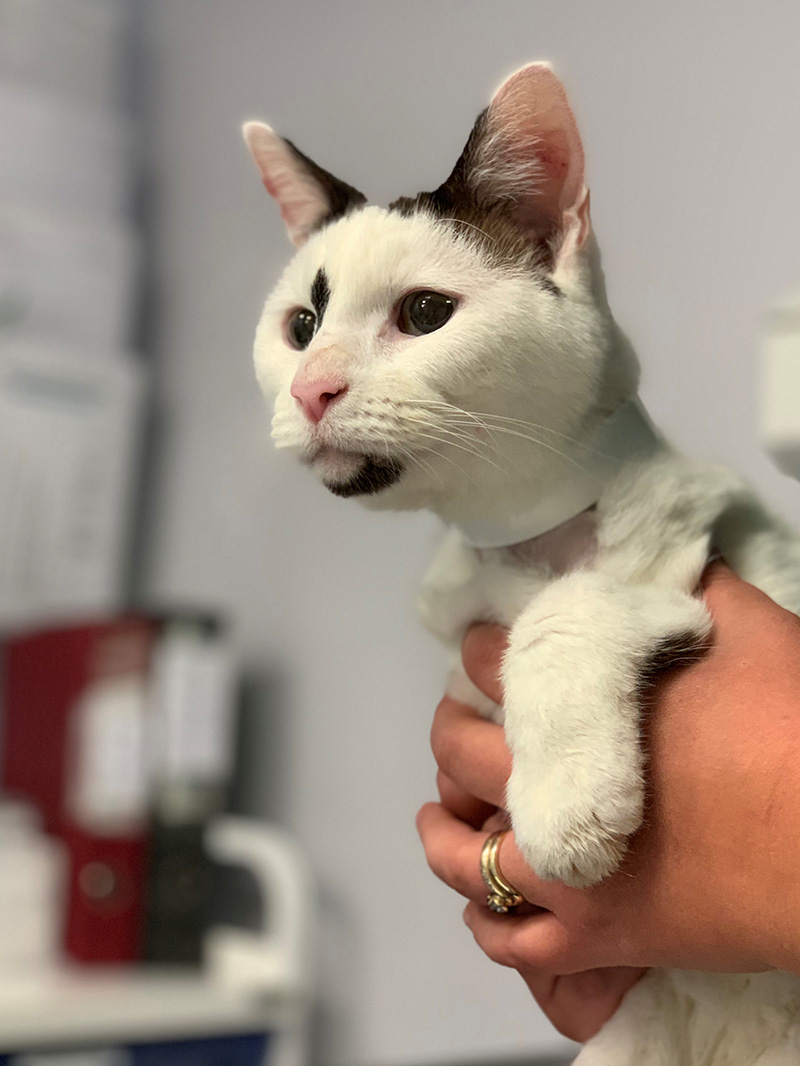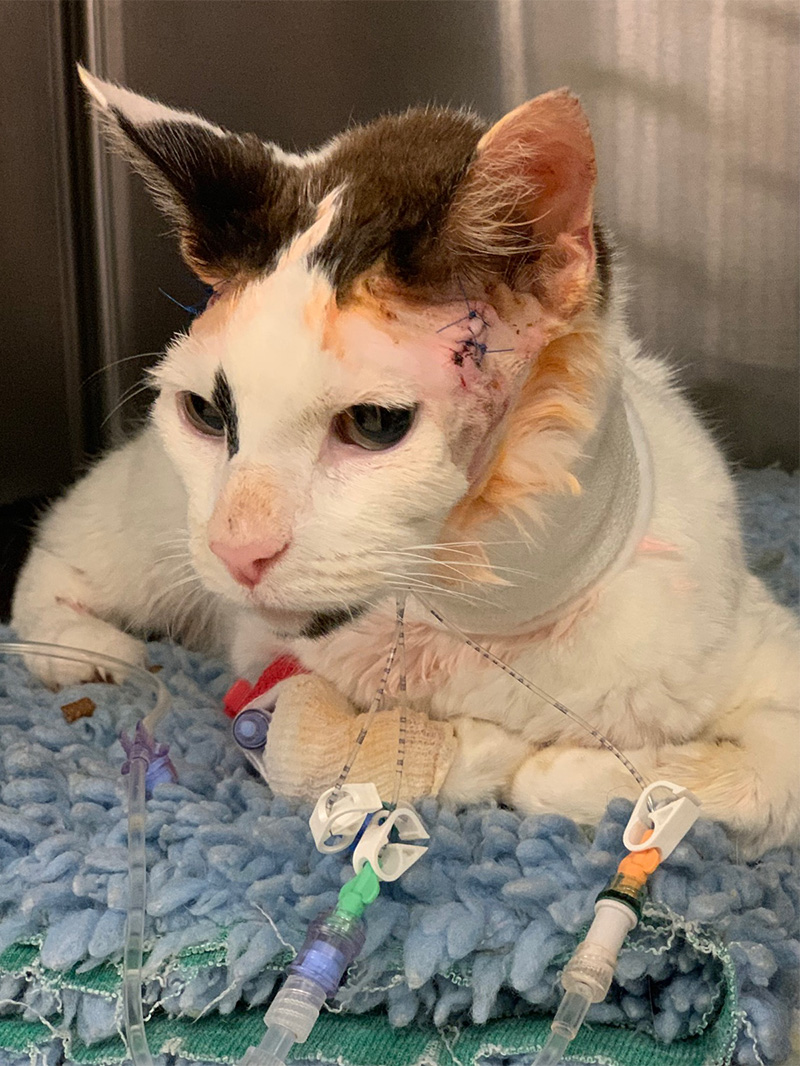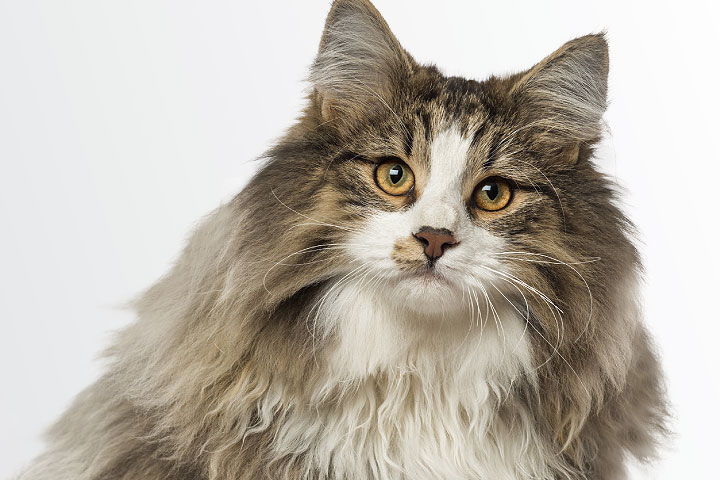acromegaly in cats uk
This article describes the pathophysiology and diagnosis of acromegaly in cats and what treatment options are currently available. Signs related to diabetes mellitus are typically the first clinical signs noticed.

Pioneering Hypophysectomy Treatment Reaches 100 Case Milestone
Common symptoms associated with insulin resistance include weight loss despite a good appetite and increased thirst and urination.
. Some cats become extremely hungry or start. Another that one in four diabetic cats in the UK is suffering from the same². Acromegaly in cats.
Prevalence of acromegaly amongst diabetic cats in North America and the UK was found to be around 1 in 4 diabetic cats seen in primary practice. The RVC team was the first in the UK to treat cats with acromegaly hypersomatotropism and is now also routinely performing hypophysectomy in dogs and the occasional cat with pituitary-dependent Cushings syndrome hyperadrenocorticism. These effects can be divided into two major classes.
In the following article well tell you more about acromegaly in cats. Prevalence of acromegaly amongst diabetic cats in North America and the UK was found to be around 1 in 4 diabetic cats seen in primary practice. Acromegaly In Cats Uk Acromegaly is a disease that progresses slowly and symptoms will take some time to start showing.
Acromegaly is an endocrine disease consisting of hypersecretion of growth hormone GH. Acromegaly is a condition that comes about when something affects your cats pituitary gland and causes it to secrete more growth hormones than are necessary. The earliest clinical signs in the 14 cats included polyuria polydipsia polyphagia all of which were associated with untreated diabetes mellitus.
This is most often caused by an abnormal growth or tumor in the pituitary gland and the hormones may vary somewhat. Acromegaly in cats is a fairly uncommon but serious feline diseaseAcromegaly can have a significant impact on your cats health is most often associated with. Acromegaly In Cats Uk - Stijn niessen who also runs the rvc diabetes remission clinic.
It is more common in cats than dogs. Affected cats can develop gradual changes in their appearance but because the disease develops over a long period of time owners may not notice any problems. Hypophysectomy for acromegaly in cats.
Dunning M D Lowrie C S Bexfield N H et al 2009 Exogenous insulin treatment after hypofractionated radiotherapy in cats with diabetes mellitus and acromegaly. Recognising this syndrome in these cats will be key to successfully managing the concurrent diabetes. Acromegaly in cats is a condition in cats caused by excessive growth hormone in the body which is usually secondary to a pituitary tumor explains Dr.
Thirteen 93 of the cats were male and one was female. Acromegaly is a relatively rare condition caused by excessive hormone production in the brain or in mammary gland breast tissue. Cardiomegaly and azotemia develop late in the disease.
The origin of this alteration in cats is the presence of a tumor in the pituitary gland. Affected cats can develop gradual changes in their appearance but because the disease develops over a long period of time owners may not notice any problems. Growth of the extremities skull and muscles occur in some cats.
Acromegaly was diagnosed in 14 middle-aged to old cats of mixed breeding. Berg R I Nelson R W Feldman E C et al 2007 Serum insulin-like growth factor-1 concentration in cats with diabetes mellitus and acromegaly. However cats of any age or sex can develop acromegaly.
Acromegaly is a relatively rare condition caused by excessive hormone production in the brain or in mammary gland breast tissue. Testing confirmed acromegaly in over 90 of those. Recent clinical studies at the RVC in the UK have brought to light the fact that Acromegaly is far more common than previously thought.
In cats it is due to GH-secreting tumors of the anterior pituitary. Neissen states Acromegaly one of the endocrinopathies in the. Monday May 2 2016.
An Acro Cat is usually suffering from significant pain as a result of the uncontrolled growth of bone and tissue you need to talk to your vet about appropriate analgesics to help. The prevalence amongst non-diabetic cats is currently unknown although these cats would be expected to become diabetic in the long-run. The catabolic actions of growth hormone include insulin antagonism and lipolysis.
Acromegaly should be considered as a possible cause of difficult to regulate and high dose diabetic cats. The potential of feline acromegaly providing. Just like the normal non-acromegalic diabetic cat the acromegalic diabetic cat tends to be a middle-aged to older male neutered domestic short hair.
Acromegaly is caused by excess secretion of growth hormone GH in adult animals. So as many as 1 in 3 hard-to-control diabetic cats may have acromegaly. One study has shown that one in three diabetic cats in North America suffers from acromegaly induced diabetes¹.
It is more common in cats than dogs. The disease is therefore likely currently underdiagnosed. Treat the pain.
JVIM 23 2 243-249 PubMed. The term hypersomatotropism HST rather than acromegaly may be appropriate when describing the condition resulting from chronic excessive GH secretion in. Feline acromegaly is a disease characterized by excessive growth hormone secretion leading to a wide array of clinical signs caused by the hormones effects on multiple organ systems.
Acromegaly is the term used in human medicine to describe a condition resulting from chronic excessive growth hormone GH secretion. On the other hand with a prevalence of 261 among diabetic cats and an estimated prevalence of diabetes of 1 in 200 cats in the UK up to one and a half in 200 in the United States the overall estimated prevalence of acromegaly in the domestic cat could be significantly higher than in the human population. Acromegaly is an endocrine disease caused by a tumour in.
Stjin Neissen of the RVC Feline Diabetes Clinic is leading the charge when it comes to clinical research on the prevalence of FD and Acromegaly in cats. Acromegaly may be suspected in a cat who is persistently hyperglycemic despite daily insulin injections especially if it is accompanied by other symptoms such as weight gain 1 along with ruling out other conditions which also cause uncontrolled diabetes is important hyperthyroidism hyperadrenocorticism. Acromegaly was thought to be a rare condition but a recent UK study of diabetic cats with poor to adequate glycemic control showed that nearly a third of them showed signs of acromegaly.
Acromegaly is most commonly seen in older 10 years old neutered male cats that have insulin-resistant diabetes mellitus. The same Tight Regulation protocol used on Diabetic Cat International for non acromegalic works very well for cats with acromegaly and will help you control your cats BGs. However with increasing case experience this signalment may change.
Its a rare disease but unfortunately it can become quite serious.

Meet The Handsome Senior Cat With Cerebellar Hypoplasia And Acromegaly Who Found A Wonderful Home After His Owner Passed Away Senior Cat Cats Handsome

Acromegaly In Cats The Veterinary Nurse

Woman Begs People To Stop Blaming Her For Her Fat Cat S Massive Size Metro News

Acromegaly In Cats The Veterinary Nurse

Pdf Acromegaly In A Non Diabetic Cat

Pioneering Hypophysectomy Treatment Reaches 100 Case Milestone

Acromegaly In Cats The Veterinary Nurse

Acromegaly In Cats The Veterinary Nurse

Cat Who Has Been Shelter For Half Her Life Is Desperate To Find A New Home Metro News

The Management Of Feline Hypersomatotropism Hs Acromegaly

Acromegaly In Cats The Veterinary Nurse

Woman Begs People To Stop Blaming Her For Her Fat Cat S Massive Size Metro News

